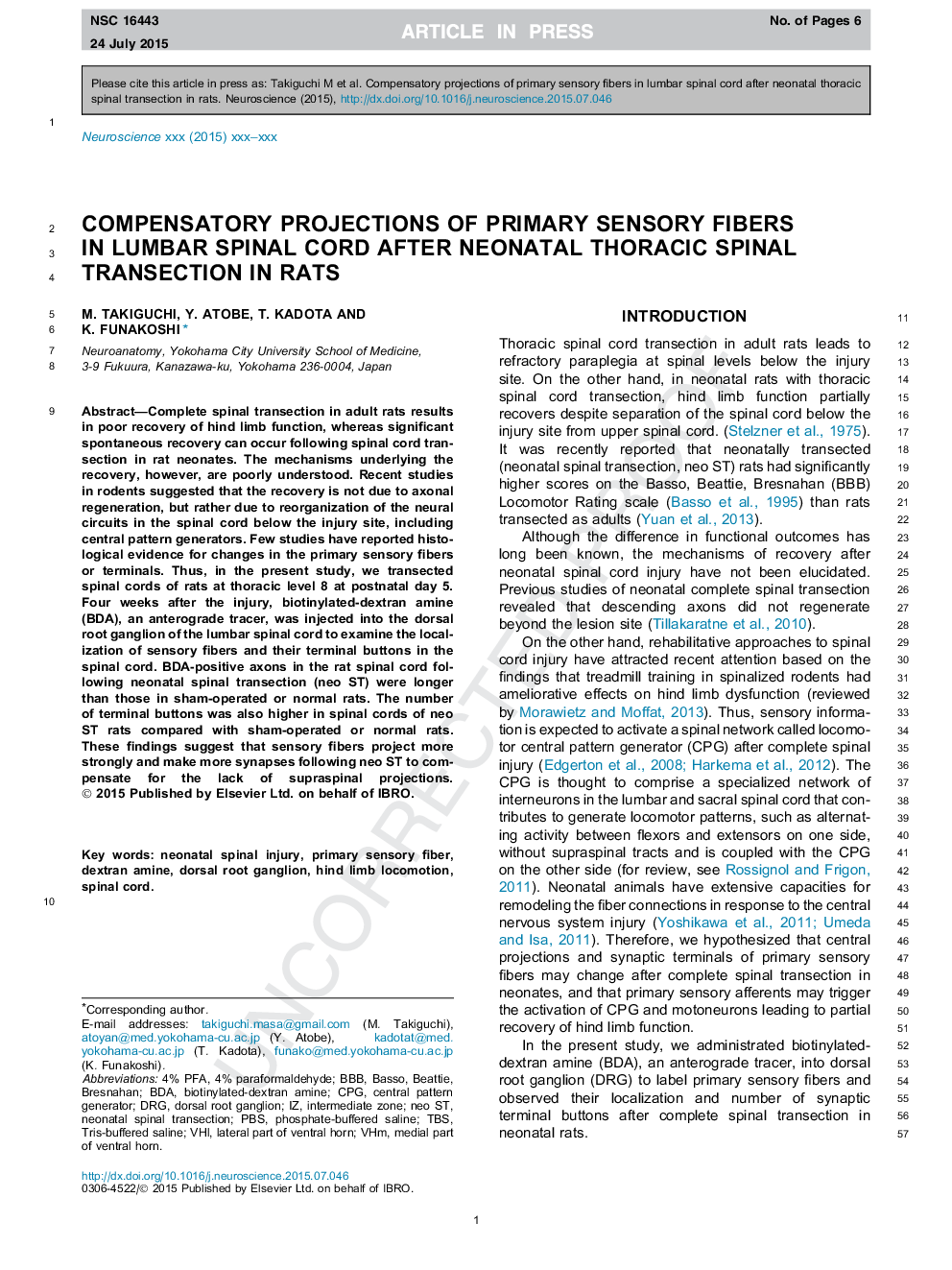| Article ID | Journal | Published Year | Pages | File Type |
|---|---|---|---|---|
| 6272447 | Neuroscience | 2015 | 6 Pages |
Abstract
Complete spinal transection in adult rats results in poor recovery of hind limb function, whereas significant spontaneous recovery can occur following spinal cord transection in rat neonates. The mechanisms underlying the recovery, however, are poorly understood. Recent studies in rodents suggested that the recovery is not due to axonal regeneration, but rather due to reorganization of the neural circuits in the spinal cord below the injury site, including central pattern generators. Few studies have reported histological evidence for changes in the primary sensory fibers or terminals. Thus, in the present study, we transected spinal cords of rats at thoracic level 8 at postnatal day 5. Four weeks after the injury, biotinylated-dextran amine (BDA), an anterograde tracer, was injected into the dorsal root ganglion of the lumbar spinal cord to examine the localization of sensory fibers and their terminal buttons in the spinal cord. BDA-positive axons in the rat spinal cord following neonatal spinal transection (neo ST) were longer than those in sham-operated or normal rats. The number of terminal buttons was also higher in spinal cords of neo ST rats compared with sham-operated or normal rats. These findings suggest that sensory fibers project more strongly and make more synapses following neo ST to compensate for the lack of supraspinal projections.
Keywords
Related Topics
Life Sciences
Neuroscience
Neuroscience (General)
Authors
M. Takiguchi, Y. Atobe, T. Kadota, K. Funakoshi,
